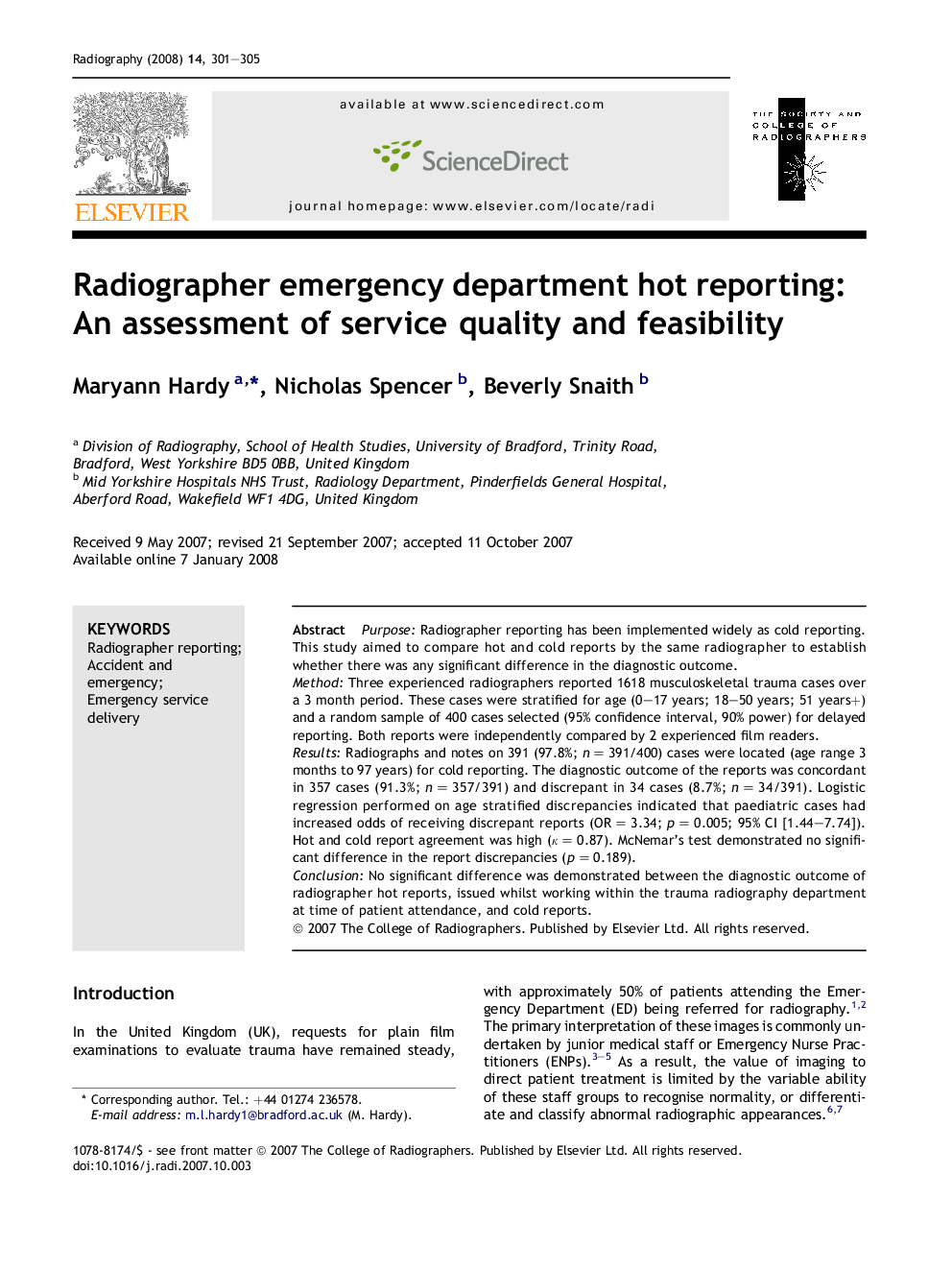| Article ID | Journal | Published Year | Pages | File Type |
|---|---|---|---|---|
| 2737566 | Radiography | 2008 | 5 Pages |
PurposeRadiographer reporting has been implemented widely as cold reporting. This study aimed to compare hot and cold reports by the same radiographer to establish whether there was any significant difference in the diagnostic outcome.MethodThree experienced radiographers reported 1618 musculoskeletal trauma cases over a 3 month period. These cases were stratified for age (0–17 years; 18–50 years; 51 years+) and a random sample of 400 cases selected (95% confidence interval, 90% power) for delayed reporting. Both reports were independently compared by 2 experienced film readers.ResultsRadiographs and notes on 391 (97.8%; n = 391/400) cases were located (age range 3 months to 97 years) for cold reporting. The diagnostic outcome of the reports was concordant in 357 cases (91.3%; n = 357/391) and discrepant in 34 cases (8.7%; n = 34/391). Logistic regression performed on age stratified discrepancies indicated that paediatric cases had increased odds of receiving discrepant reports (OR = 3.34; p = 0.005; 95% CI [1.44–7.74]). Hot and cold report agreement was high (κ = 0.87). McNemar's test demonstrated no significant difference in the report discrepancies (p = 0.189).ConclusionNo significant difference was demonstrated between the diagnostic outcome of radiographer hot reports, issued whilst working within the trauma radiography department at time of patient attendance, and cold reports.
